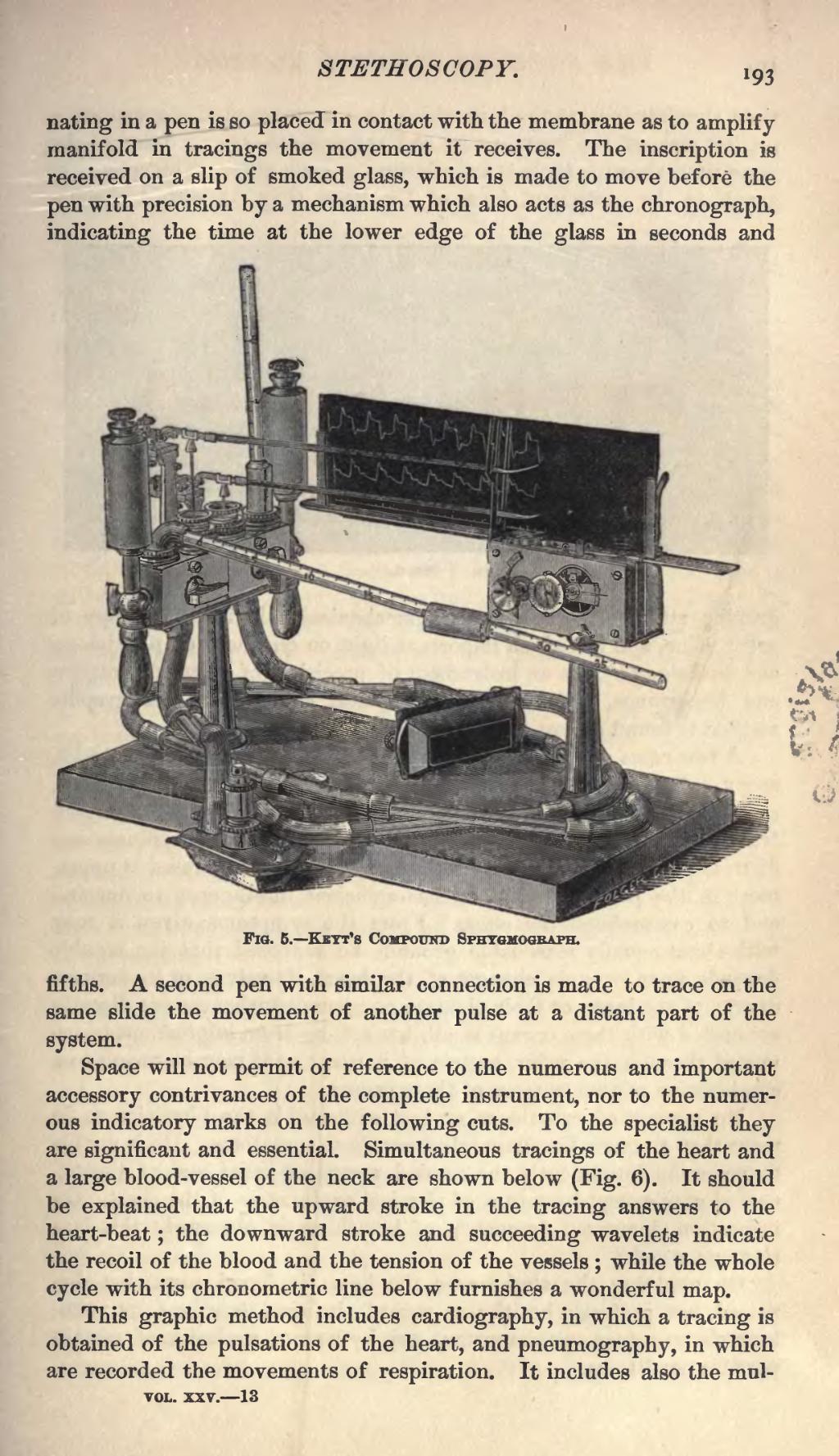nating in a pen is so placed in contact with the membrane as to amplify manifold in tracings the movement it receives. The inscription is received on a slip of smoked glass, which is made to move before the pen with precision by a mechanism which also acts as the chronograph, indicating the time at the lower edge of the glass in seconds and

Fig. 5.—Keyt's Compound Sphygmograph.
fifths. A second pen with similar connection is made to trace on the same slide the movement of another pulse at a distant part of the system.
Space will not permit of reference to the numerous and important accessory contrivances of the complete instrument, nor to the numerous indicatory marks on the following cuts. To the specialist they are significant and essential. Simultaneous tracings of the heart and a large blood-vessel of the neck are shown below (Fig. 6). It should be explained that the upward stroke in the tracing answers to the heart-beat; the downward stroke and succeeding wavelets indicate the recoil of the blood and the tension of the vessels; while the whole cycle with its chronometric line below furnishes a wonderful map.
This graphic method includes cardiography, in which a tracing is obtained of the pulsations of the heart, and pneumography, in which are recorded the movements of respiration. It includes also the mul-

